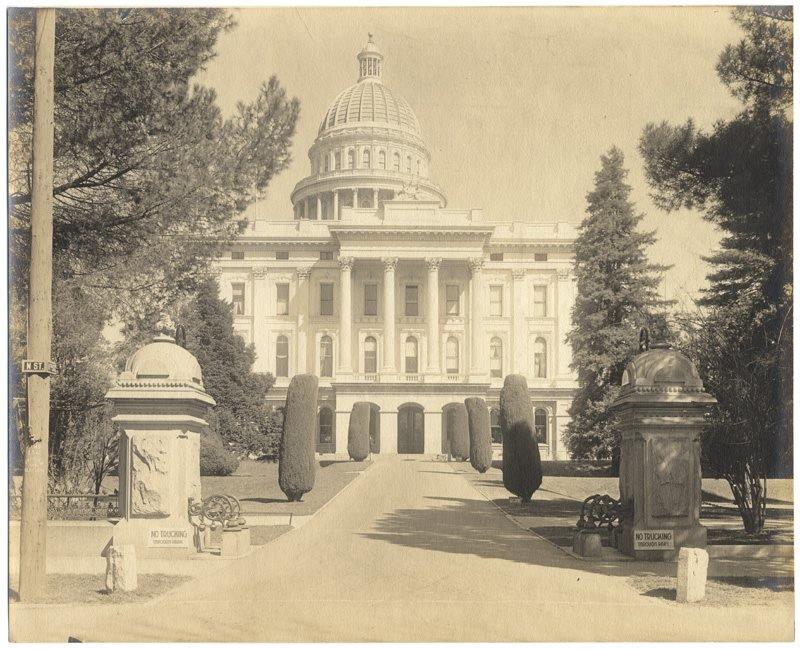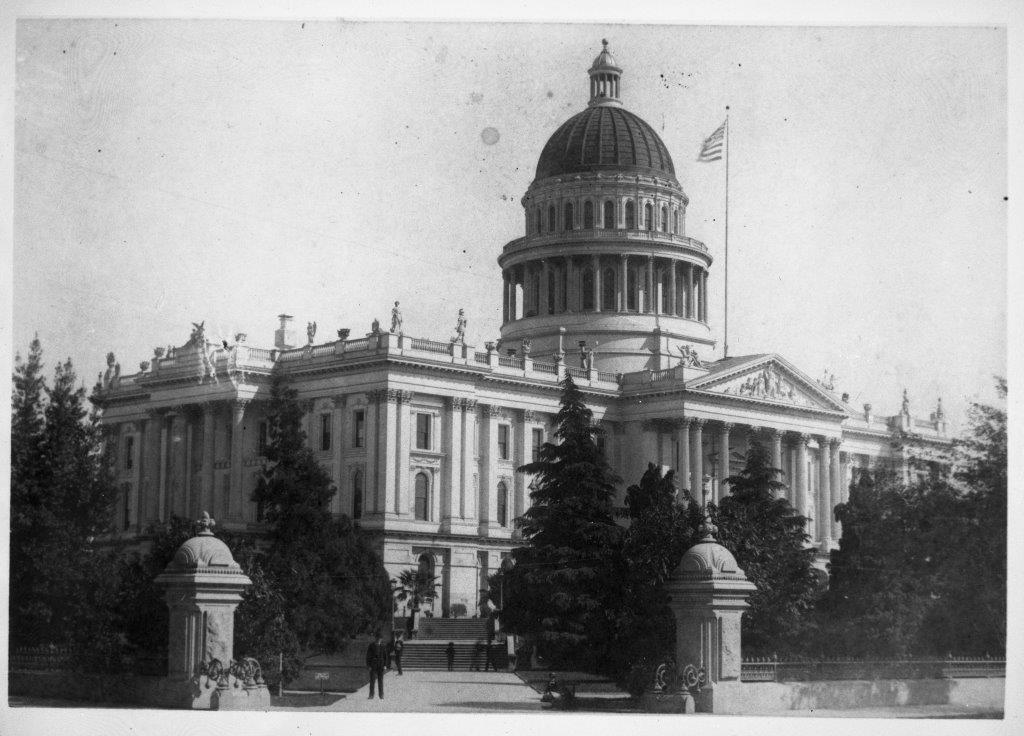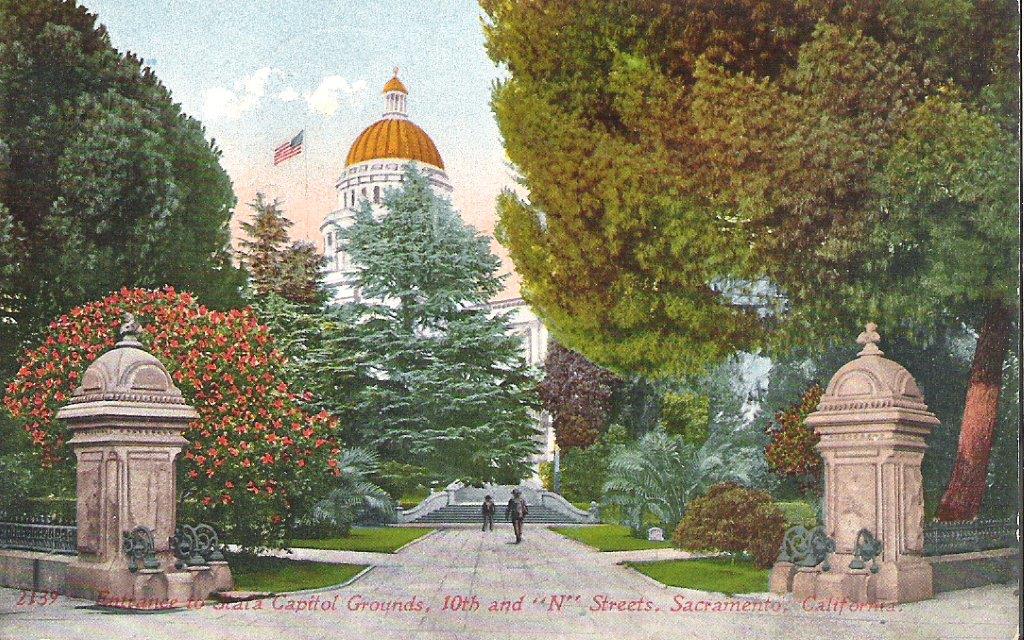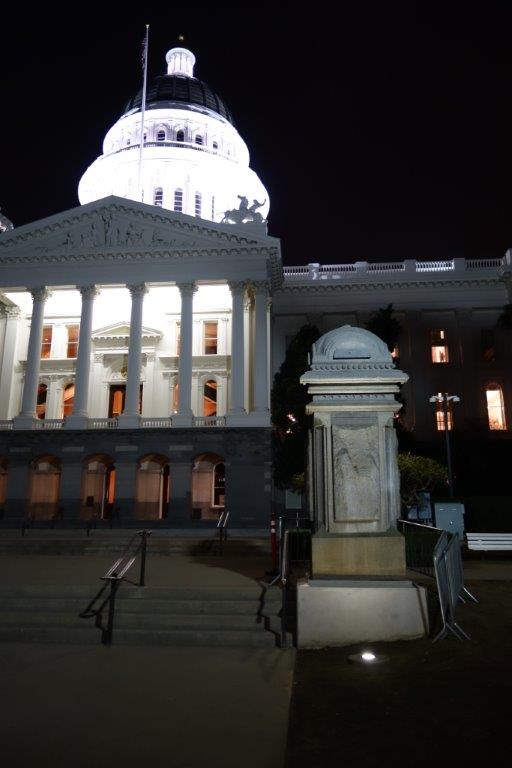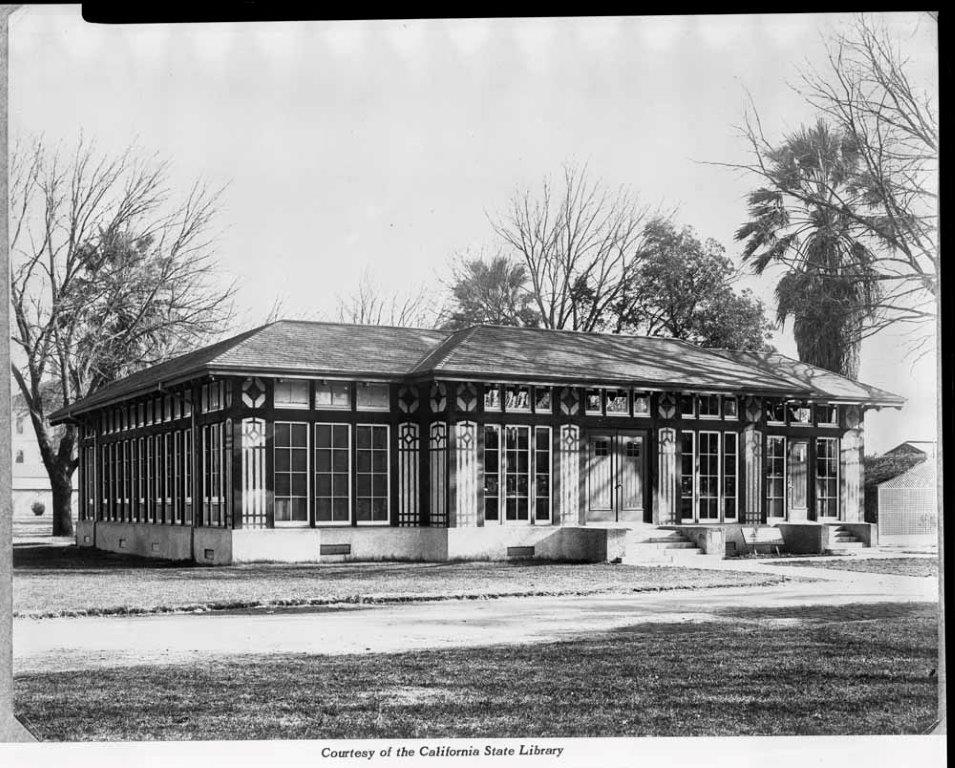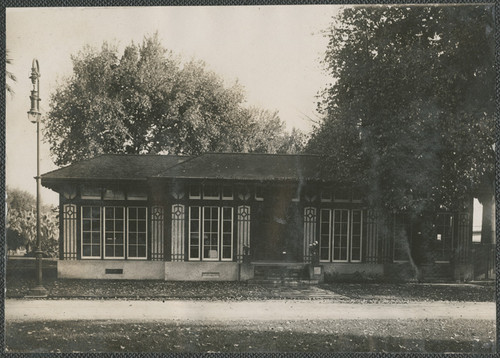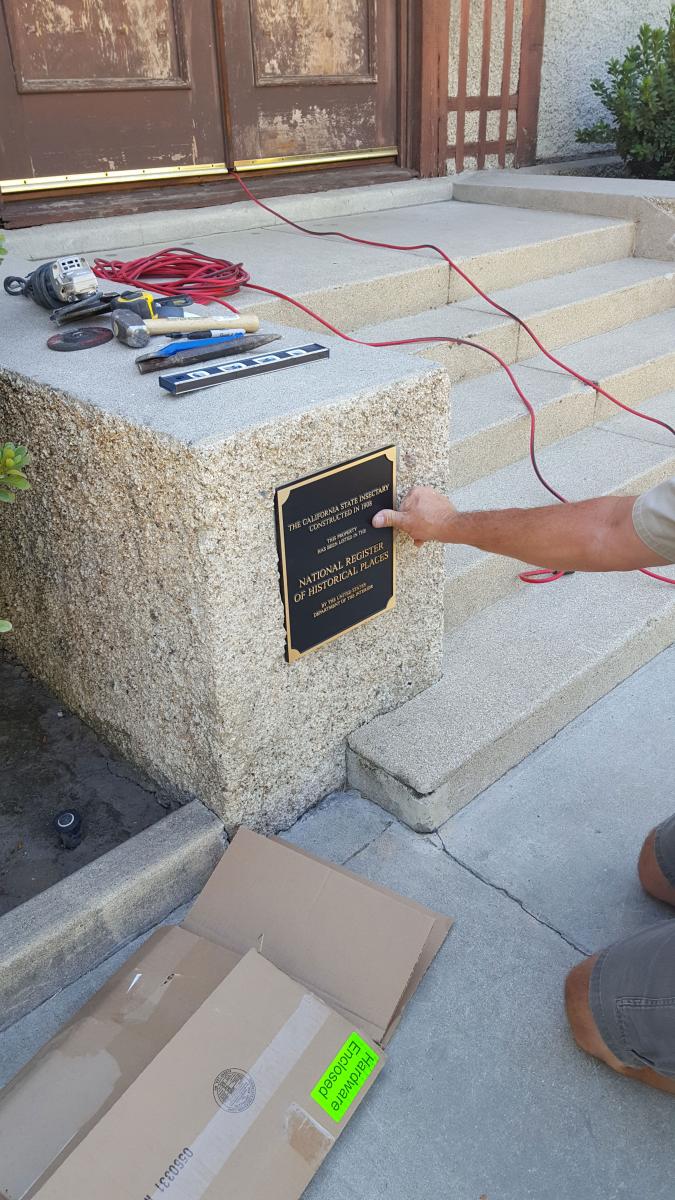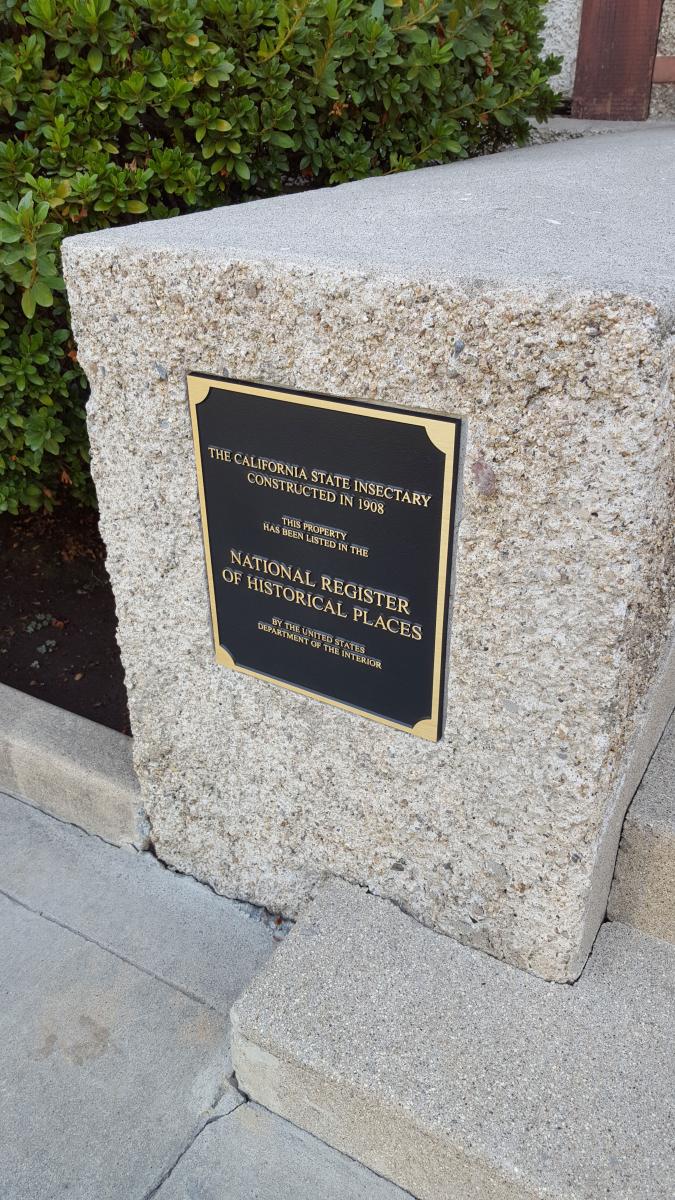The Historic State Capitol Commission has taken the lead on projects to enhance or document the history of the State Capitol. Two principal projects have been the restoration of historic pillars to the State Capitol grounds, and the placement of a plaque on the Insectary building on the Capitol grounds to document the inclusion of the Insectary on the National Register of Historic Places.
Pillars
A decorative fence system encircled Capitol Park from 1889 to 1952, when the ornate stone and ironwork was removed as part of a major modification and modernization of the grounds. For decades, the park had showcased Victorian-era design elements: stately terraced landscaping, stone staircases, monolithic pillars, pilasters with stone block and iron fencing, and stone bollards with chains. Positioned like gateposts, the granite pillars stood at the entrances to the park. By October 1952, the terraces had been smoothed to create gentle slopes, and all the ornamental stone work and pillars were removed. The new grounds complemented the 1950s modernization exhibited by the addition of the Capitol annex.
Eight of these monumental gateposts were installed in various locations in Folsom, California and two were installed at the entrance to Christ the King Passionist Retreat Center in Citrus Heights, California. Under agreement with the Joint Committee on Rules of the California Legislature, the Retreat graciously permitted the return of these two gateposts. On February 25, 2016, the posts were installed at the West Entrance of the Capitol.
Insectary Plaque
The Insectary building, located in Capitol Park, was listed in the National Register of Historic Places in April 3, 1973 as part of the “California’s State Capitol” nomination form that included Capitol Park, between 10th and 16th Streets and L and N Streets. The Insectary building is also listed in the California Register of Historical Resources because buildings that are listed in the National Register are automatically included in the California Register. In addition, the Insectary was included in the Department of Parks and Recreation – National Inventory Survey conducted in 1972.
The purpose of the State Insectary was the study and propagation of beneficial insects to support California’s agricultural development. At one time, the insectary included a museum of insects and plants. The building ceased functioning as the State Insectary prior to 1938 and has since been used for the maintenance of Capitol Park and its plants. When the original State Insectary was destroyed during the 1906 San Francisco earthquake and fire, it was reconstructed in Capitol Park.
In 2016, a National Register plaque was affixed to the exterior of the Insectary building in recognition of this honor.


